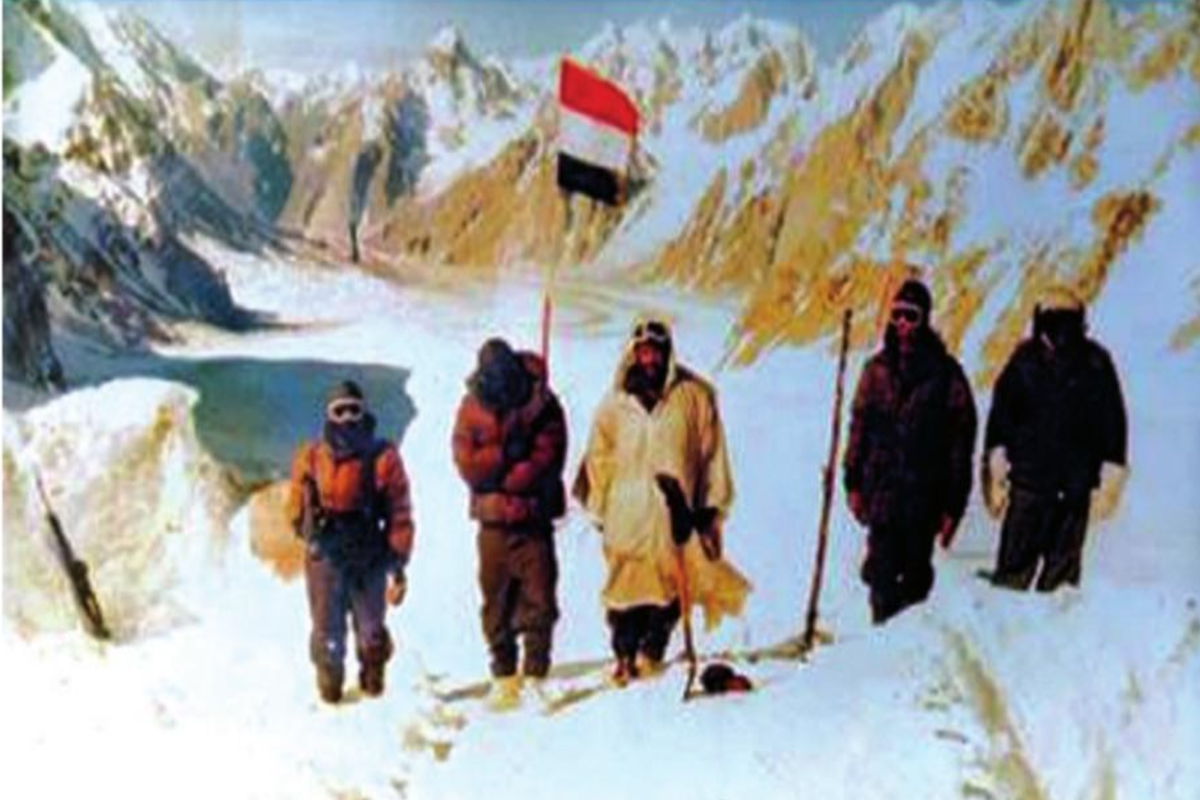Long before the dramatic rescue of Lance Naik Hanumanthappa in 2016 and the tragic death of 140 Pakistani soldiers at Gyari in 2012 captured the imagination of people on both sides of the border, with the mainstream media reporting on the developments in great detail almost on a daily basis, there was a band of 18 young men of 19 Kumaon (or UNNIS as it is known) who made the supreme sacrifice for the country and perished in an avalanche, unreported, unsung and forgotten. It is time we remember them and gives them their due. The date was 29 May and the year 1984.
Operation Meghdoot, which was launched by the Indian Army on 13 April 1984 and continues, was a meticulously planned pre-emptive strike which helped India occupy the Saltoro Heights and thereby control the entire Siachen Glacier Region. Contrary to popular belief, the actual planning for occupying the heights and establishing posts thereon commenced only after the first protest notes were received from Pakistan in 1983. Prior to that, several Long Range Patrols (Polar Bear I, Polar Bear II, IBEX Hunt etc.) had been undertaken by the Army to show the Flag primarily in response to the Pakistani expeditions which were regularly visiting the region.
Since Bilafond La and Sia La were the most popular routes used by all mountaineers as well as the Pakistani expeditions to access the Glacier by crossing the Saltoro Ridge, the Indian Army planned to occupation these passes to completely cut off any access to the Glacier from the other side. With enough intelligence and feedback from its previous recce missions, the troops of 4 Kumaon were equipped with their hurriedly purchased winter gear and heli-dropped to occupy these passes on 13 April 1984 marking the commencement of Operation Meghdoot.
Advertisement
What was crucially overlooked during the planning phase was the possibility of a counter-attack by the Pakistanis through Gyong La and over the ridgeline south of Bilafond La. For the uninitiated, the Saltoro Ridgeline is near 15kms long and near Gyong La is at altitudes of 18500 to 22,000 feet which is more than both Bilafond La and Sia La. Further, the terrain is lofty, snow-clad with dangerous moraines, crevasses and icicles with peaks on both sides of Gong La being very steep and culminating in pinnacles, making them extremely difficult to climb. Further, overhanging ice blocks over ledges and unstable cornices make this area avalanche-prone as they can break and entomb whatever comes in their way.
By dominating Gyong La it was always possible for Pakistan to threaten and cut off the entire Indian supply line from the Base Camp to its posts on the Glacier and beyond. Even though this apprehension was expressed during the wargaming exercise codenamed Walnut Cracker which took place on 26 March 1984 at XV Corps HQ, Srinagar, it was downplayed both at the Division and Sector level. It was opined that since the ridgeline south of Bilafond La was much higher and its approaches much steeper it was virtually inaccessible and therefore it would be very difficult for anyone to climb, occupy and sustain troops at those heights.
Further, no movement from Pakistan had ever been reported from that side and the Pakistani Pumas had a ceiling of about 15,750 feet which was not enough to cross the Saltoro Ridgeline near Gyong La with any effective load. As a result, no contingency planning was done to occupy Gyong La or react to any Pakistani threat from that side. Thus, while Siachen itself right up to Indira Col had been reconnoitred in detail, the same was not the case with this region.
However, what was not planned, did happen. Around 19 May 1984, it was reported that there was indeed some movement from the Pakistani side towards the Gyong La region. Accordingly, the Sector Commander directed UNNIS to neutralize this threat by dominating the Saltoro Ridgeline at heights above 18,000 feet, in and around Gyong La before the enemy could occupy it.
And UNNIS, with the limited intelligence available and limited resources at its disposal, rose to the occasion and went on to occupy OP Hill and Point 5705 thereby thwarting any movement of the Pakistanis towards Siachen from Gyong La. However to consolidate the position further, it was directed to occupy Point 5965 as well.
Second Lt. P S Poondir along with 17 other ranks including two Havildars, two Naiks, two Lance Naiks and Jawans volunteered for this dangerous mission. Most of these young men were under 25. Five of them were not married and some had not yet been on their first leave. After gathering all the gear and equipment they could muster, this Band of Brothers left their post on 27 May 1984 and started the arduous trek towards point 5965. It had been decided that they would communicate with their CO at 5 a.m. before commencing their ascent and at 6 p.m. when they reached their night halt location.
On 29 May 1984, no message was received from 2/Lt Poondir in the morning. Fearing the worst, a search was ordered and besides the helicopter sent by the Sector, a search party started moving up from the Base Camp in the direction of 2/Lt Poondir’s team. The first body to be found was that of Sepoy Pushkar Singh. Thereafter every day a few more bodies were recovered. Sometime after midnight on 28 May, there had been a big avalanche which took the whole patrol with it, burying everyone and everything within a two-kilometre range. No one had heard anything untoward or worth reporting. People were used to hearing the sounds of an avalanche, especially at night when everything was magnified by the echoes. It must have all been very sudden for the troops to react.
29 May 1984 and every night thereafter was a nightmare for UNNIS. Everyone was up, keeping vigil over the bodies of their young comrades as they kept on coming in every day to the base camp. Second Lieutenant Poondir’s body was found two months later. In spite of regular searches, five bodies had still not been recovered till 2017.
Poondir had put in only one and a half years of service and like his other comrades was in the prime of his life. UNNIS lost two more men in the Operation and the funeral of all these young men was conducted on the banks of the Nubra River at Those by their superior officers. None of the family members were present or ever received their bodies because there was no such provision at that time. None of these men received any gallantry awards for which they were recommended by their CO. The Sector Commander reported that the avalanche was triggered due to firing from the other side.
Whatever may have been the reason, Poondir and his band of brothers died unsung, in the line of duty on 29 May 1984. It has been 38 years since they were martyred. A grateful nation remembers their sacrifice today, but will it not be befitting if one of the heights in the region which we hold and dominate – whether Point 5705 or Op Hill or Point 5965 – is renamed Poondir Top to honour these men?
(The writer is the author of Meghdoot: The Beginning of the Coldest War, which tells the story of the race to Siachen and how and why India occupied it. He is based in Gurugram and can be reached at amitkrishankantpaul@gmail.com)
Advertisement










